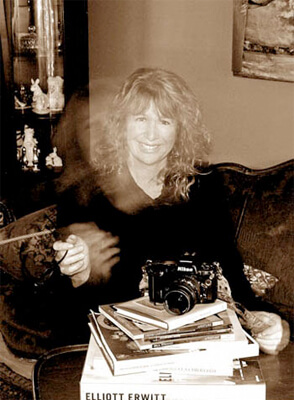Mary Anne Mitchell is a fine art photographer working primarily with analog processes. Her most recent series Meet me In my Dreams is shot using wet plate collodion. The images depict situations, often mysterious, which evoke her southern roots. She recently was a finalist in the 8th Edition of the
Julia Margaret Cameron Awards and has been invited to exhibit some of this series in the 4th Biennial of Photography to be held in Berlin. Her work has been exhibited in solo and group exhibitions across the country and can be found in private and corporate collections across the US, Dubai, Taiwan, and Canada. She lives in Atlanta, GA.
Source: www.maryannemitchellphotography.com
About Meet Me in My Dreams, 2018
"This series is inspired by my poem Meet Me in My Dreams. The setting for many of the images is a fairytale landscape. My use of the young people celebrates the universal feeling of limitless potential that most people experience in their youth.
The ghostlike figures are reflections of the later years when beauty and youth begin to fade. They suggest the feeling that one is becoming invisible and yet still present and powerful.
The work speaks to family, memory, and the ethereal passage of time.
The images are created using wet plate collodion. I scan and enlarge them to enhance the organic qualities of the medium.
These are the elements of my dreams." --
Mary Anne Mitchell
Meet Me in My Dreams
Walking through the forest of my dreams
I see a varied cast of characters.
Some are known
And some are strangers.
Some are real,
Some imagined.
I catch a glimpse of something yet I look again
and nothing is there, perhaps scattered by the wind.
My eyes are tricked by the play of light
on each and every tree.
I sometimes sense I am not alone and
someone watches me.
The stories told are mine alone.
Imagination fuels my memories and my vision is revealed.
I invite you to come and meet me in my dreams.
Interview with Mary Anne Mitchell
All About Photo:I am a Georgia native and have exhibited my work in solo and group exhibitions throughout the United States. My photographs have been featured in online publications such as Burn and Plates to Pixels and can be found in private and corporate collections around the country.
AAP: When did you realize you wanted to be a photographer?As a freshman in college, I bought a 35mm camera and took a class to learn how to use it and fell in love!
AAP: Where did you study photography?Received a BFA from UGA in Athens, GA
AAP: What or who inspires you?I always loved
Edward Weston and
Cartier Bresson as far as the masters of photography. My kids are currently my muses.
AAP: How could you describe your style?Much of my work captures authentic moments in atmospheric b/w.
AAP: What kind of gear do you use?I shoot film and use mostly 35mm
Nikon cameras or Holga or Blackbird Fly plastic cameras.
AAP: Do you spend a lot of time editing your images?In darkroom some dodging and burning.
AAP: Favorite(s) photographer(s)?I always loved Edward Weston and Cartier Bresson as far as the masters of photography. There are so many contemporary photographers doing amazing work...hard to pick... really love Vivian Maier and her whole backstory is so fascinating.
AAP: What advice would you give a young photographer?Shoot constantly but selectively.
AAP: Your best memory has a photographer?Strolling anywhere in Europe, camera in hand!
AAP: Your worst souvenir has a photographer?A soaking wet Nikon and lens after being knocked over in a canoe while trying to get an incredible shot!
